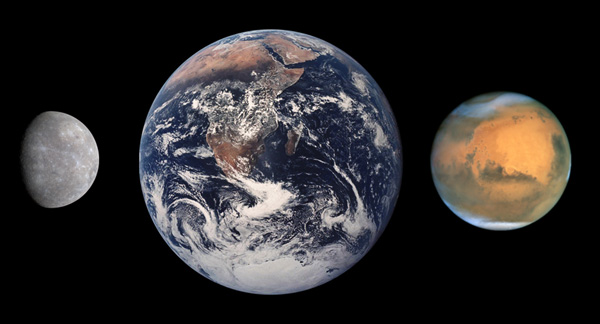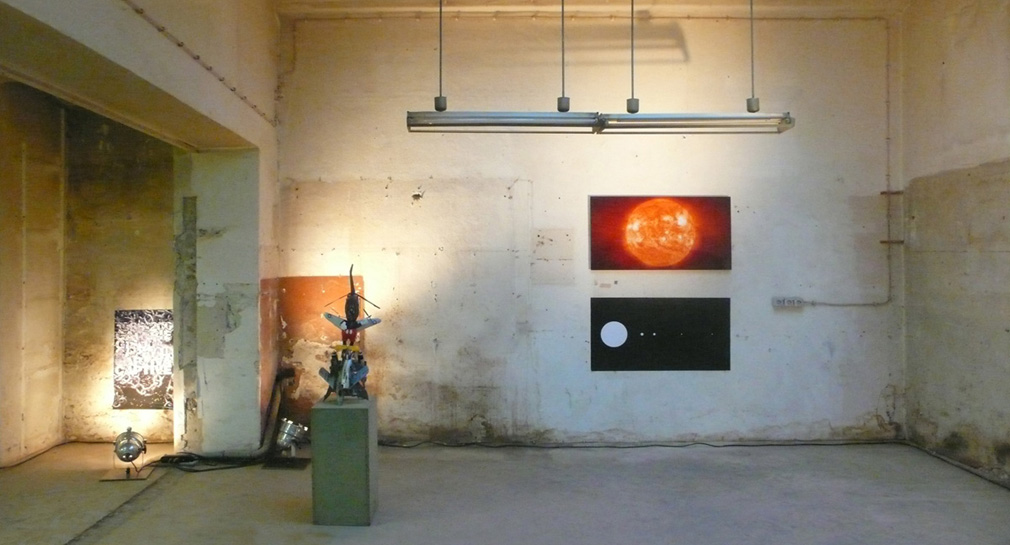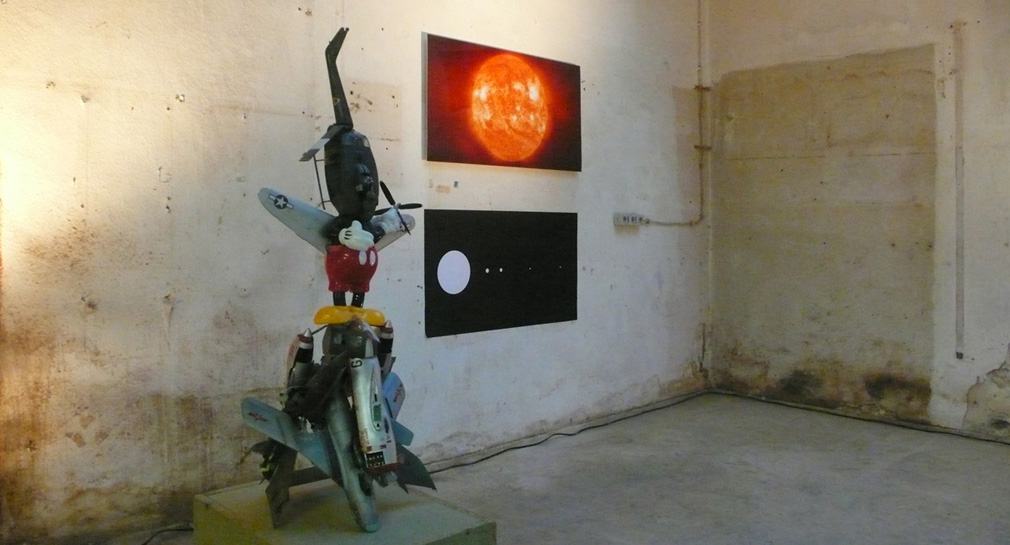title
The Future 1.1

subtitle
is so bright, you gotta wear shades
year
2008
material
C-print
edition
1+1ae
seize cm
A 148x80
B 111x60
C 74x40
D 37x20
exhibitions
usage
cc by-nc-sa Erika Artaker
info
The Sun

The title The Future Is So Bright You’ve Got to Wear Shades carries a subtle humor while critically reflecting on seemingly positive yet ultimately superficial visions of the future.
At the same time, it reveals a widespread optimism present in contemporary society, where real threats are often either treated as a pure spectacle, or unnoticed or consciously ignored.
The Sun: Source and Threat The image of the sun in the project serves a dual symbolic role.
Traditionally, the sun represents the source of life, energy, and growth on Earth. However, in the context of human-driven transformations of the planet—such as climate change and environmental degradation—the sun takes on a new, more ominous meaning. It becomes a symbol of apocalypse, reflecting the catastrophic consequences that arise when natural systems are destabilized by human activity.
This duality encapsulates the tension between life-giving forces and the looming threats to the planet’s future.
Future Visions
The project critically interrogates on one hand the widespread dissemination of superficially positive visions of the future, particularly those tied to technological progress, innovation discourse, and neoliberal development frameworks.
These visions often lack depth, failing to account for long-term ecological risks, socio-economic inequalities, and the epistemic blind spots built into current systems of forecasting and planning.
Rather than rejecting optimism outright, the work reflects on the function of optimism as a social and psychological construct.
It raises questions about the epistemological frameworks through which futures are imagined and legitimized: Who constructs these visions? What assumptions underpin them? And what is systematically excluded in the process?
Denial and Disengagement
The Future Is So Bright You’ve Got to Wear Shades on the other hand explores the psychological and sociopolitical mechanisms of denial in the face of systemic crisis.
Drawing on the aesthetics of optimism, the project critiques how dominant narratives about the future function as distractions—constructs that shield individuals and societies from confronting uncomfortable, yet urgent, realities.
At its core, the work examines the phenomenon of cognitive dissonance in late modernity: the growing gap between knowledge and action, perception and reality.
As in the satirical logic of the film Don’t Look Up, the project reflects on how warnings about existential threats—climate collapse, technological overreach, systemic instability—are either absorbed into spectacle or dismissed as incompatible with everyday life.
Hyperreality and Strategic Ignorance
Two parallel forms of disengagement are highlighted.
On one hand, those with access to knowledge often retreat into hyperreality: a space where abstract data, simulations, and mediated experience replace direct engagement, leading to a sense of helplessness or detachment.
On the other, those without access or interest in such knowledge maintain a form of strategic ignorance—a refusal to allow the weight of potential catastrophe to disrupt the routines and comforts of daily existence.
Wearing Shades – Protect and Avoid
The metaphor of "wearing shades" encapsulates this dual dynamic.
It is both a form of protection and avoidance—a filtering of perception that enables people to coexist with crisis without registering its full impact.
Optimism, in this context, is not simply naive; it is structurally produced, ideologically maintained, and psychologically necessary for the functioning of a society that cannot—or will not—change course.
How does society construct and promote stories of the future that, despite widespread acceptance, sharply contradict the realities revealed by scientific data and evidence?
title
Poster 1.2 The Future is so bright you' ve got to wear shades / 光耀未来 , 藏目于影 [Guāngyào wèilái, cáng mù yú yǐng]
info
base: AI generated Images
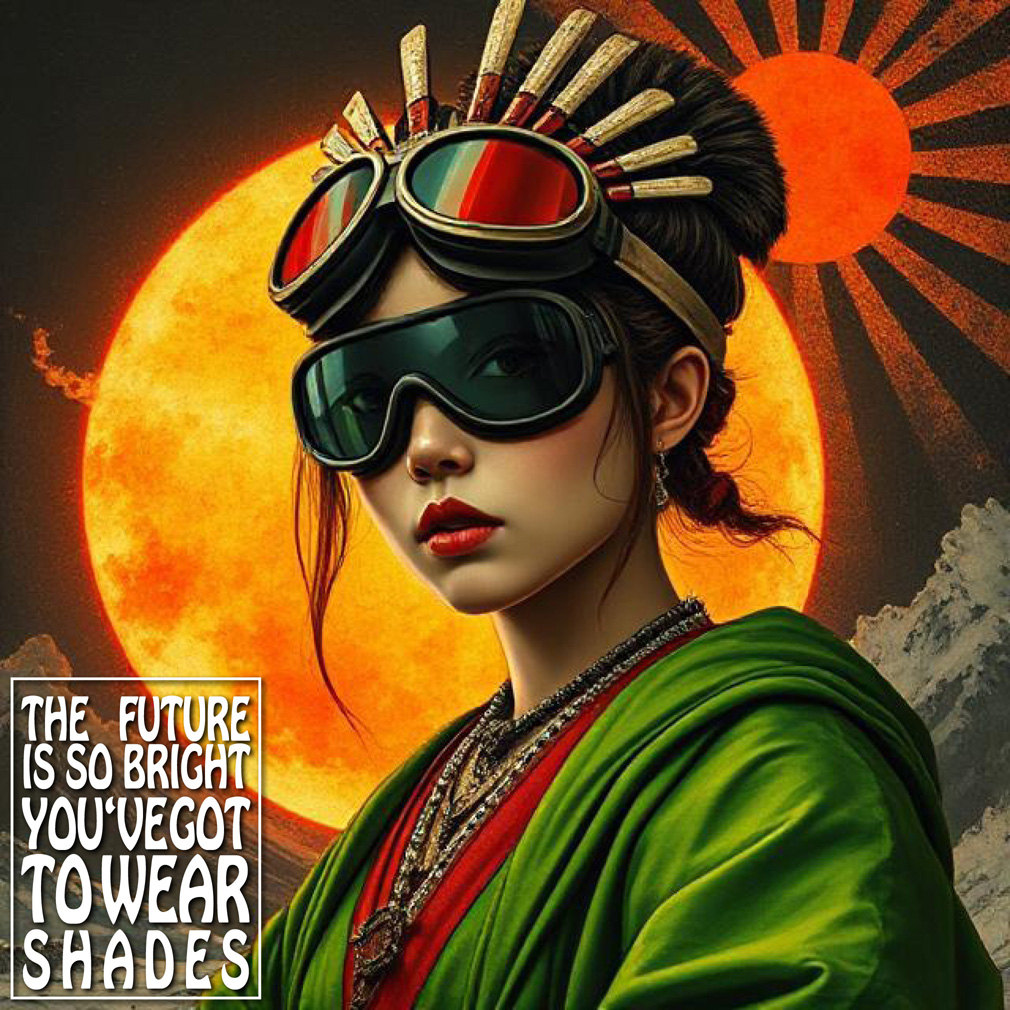
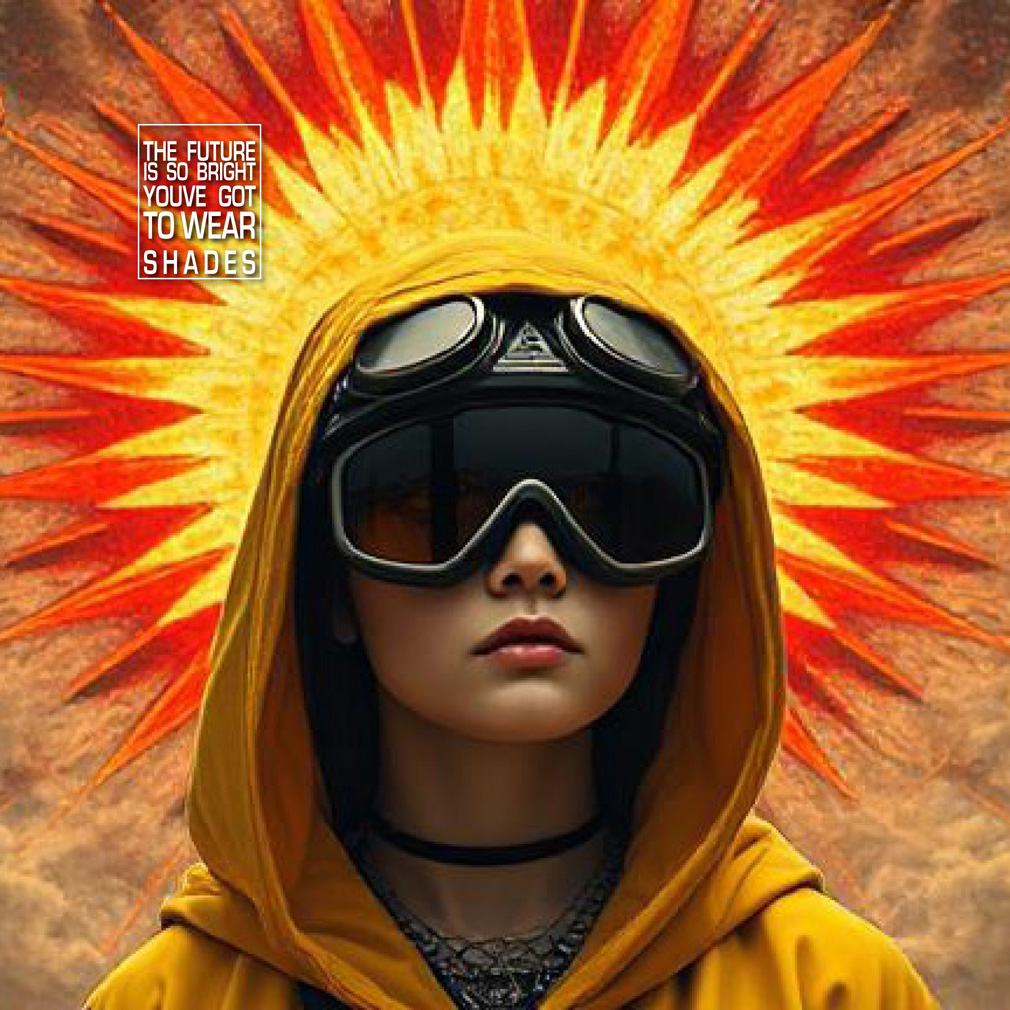
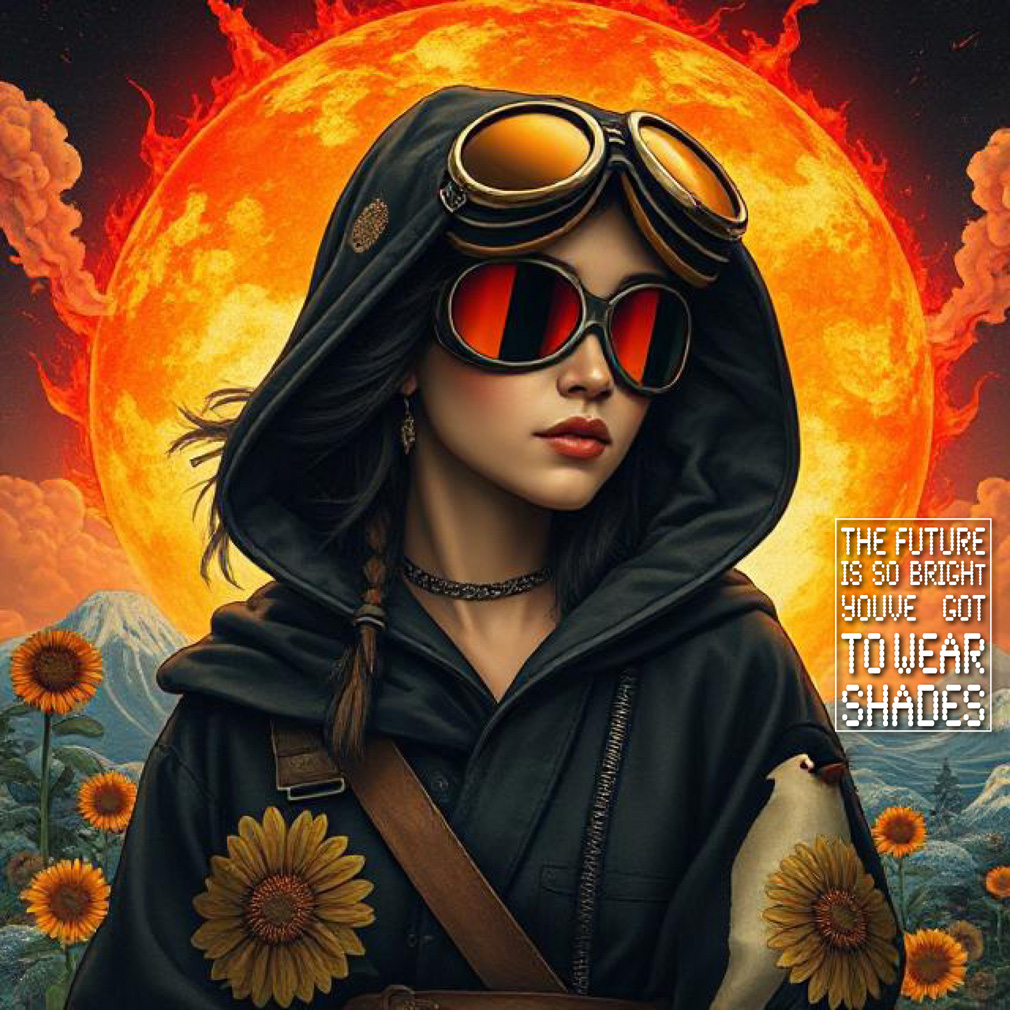
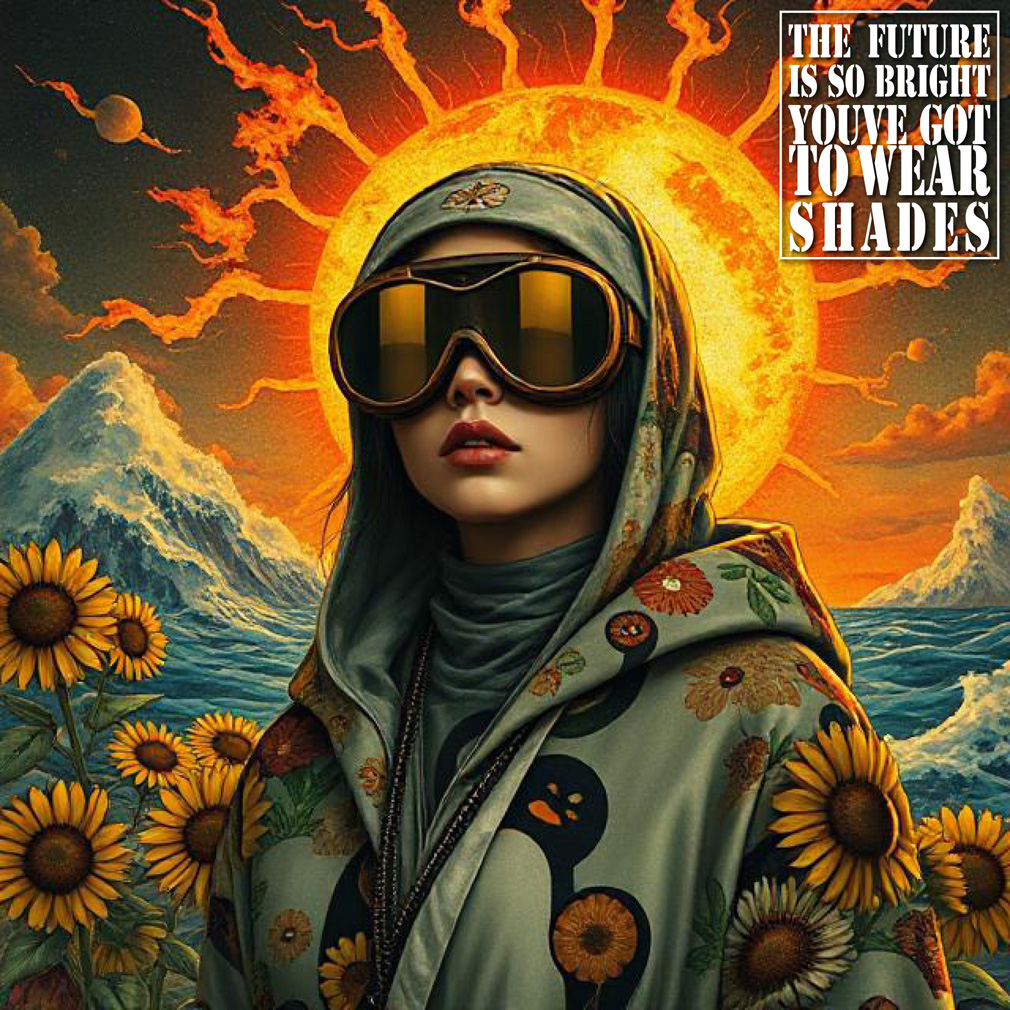
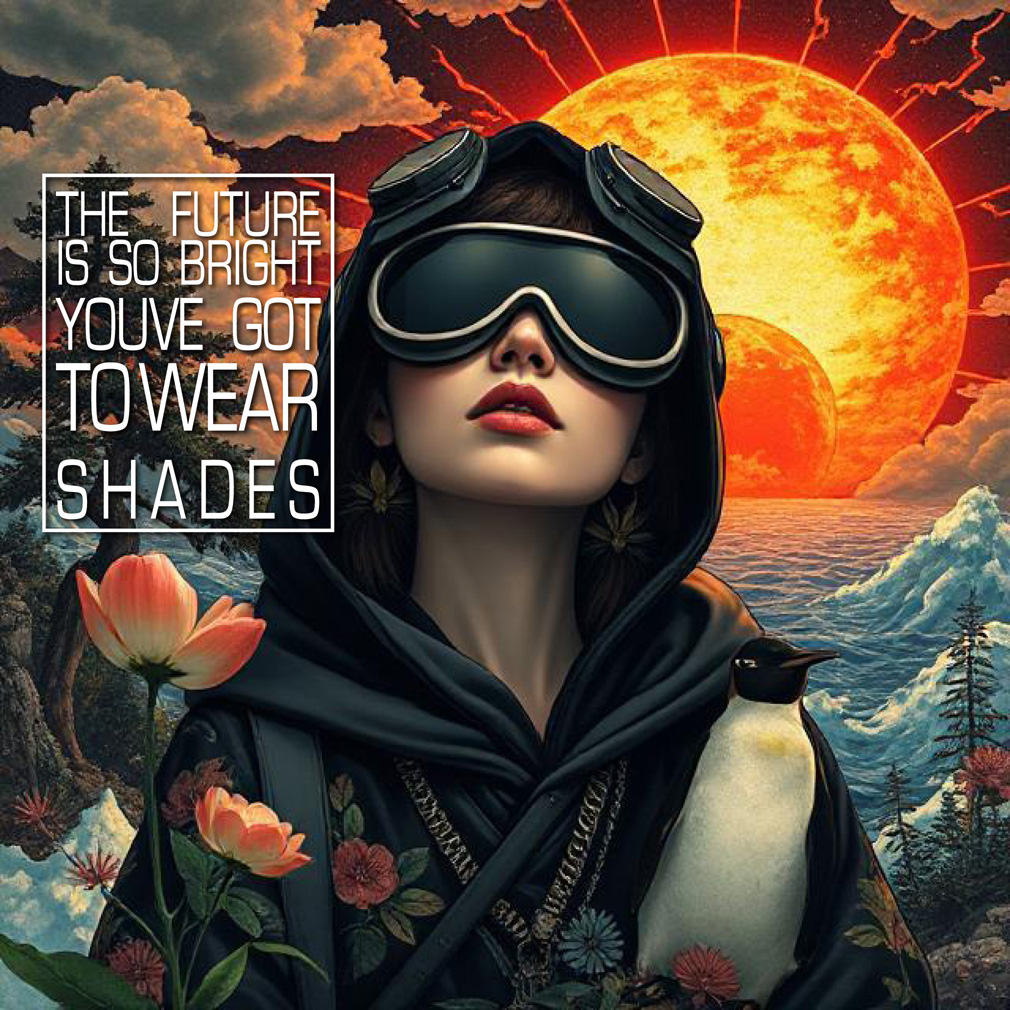
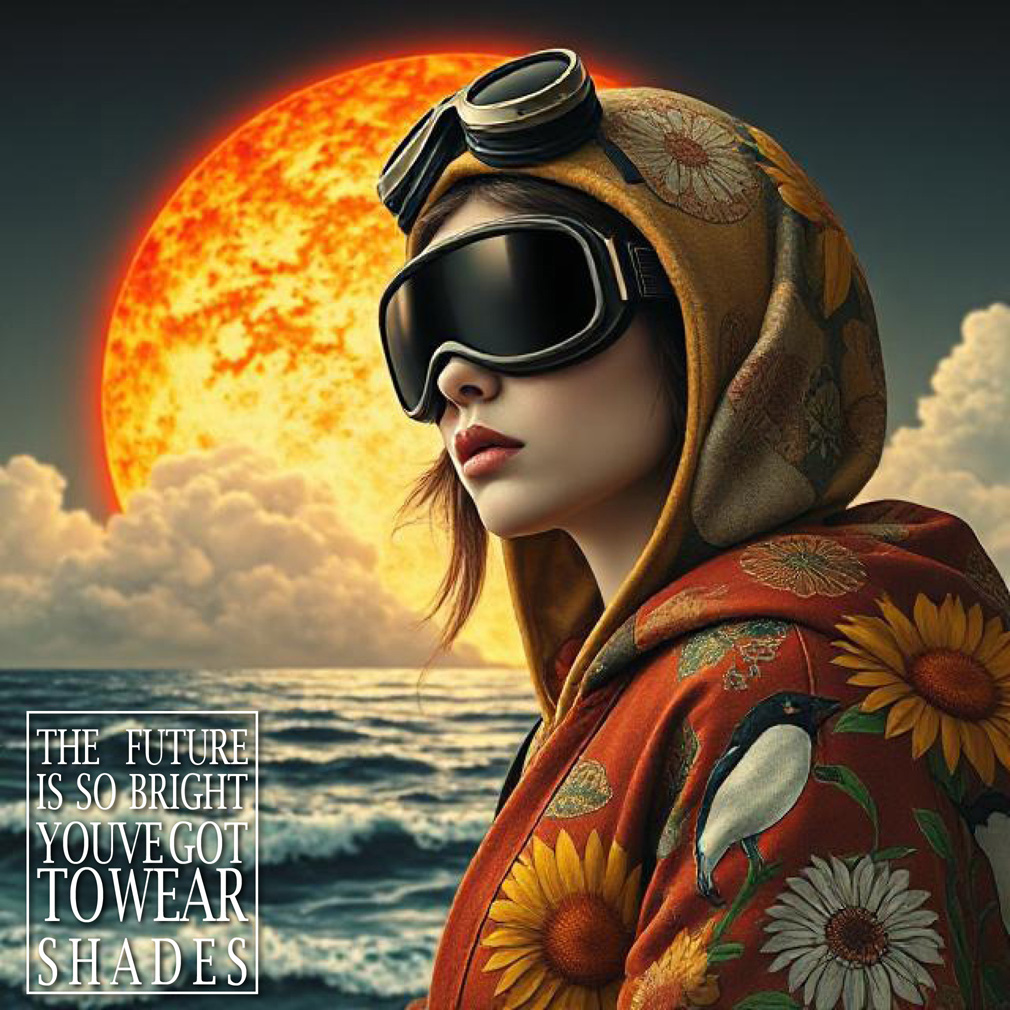


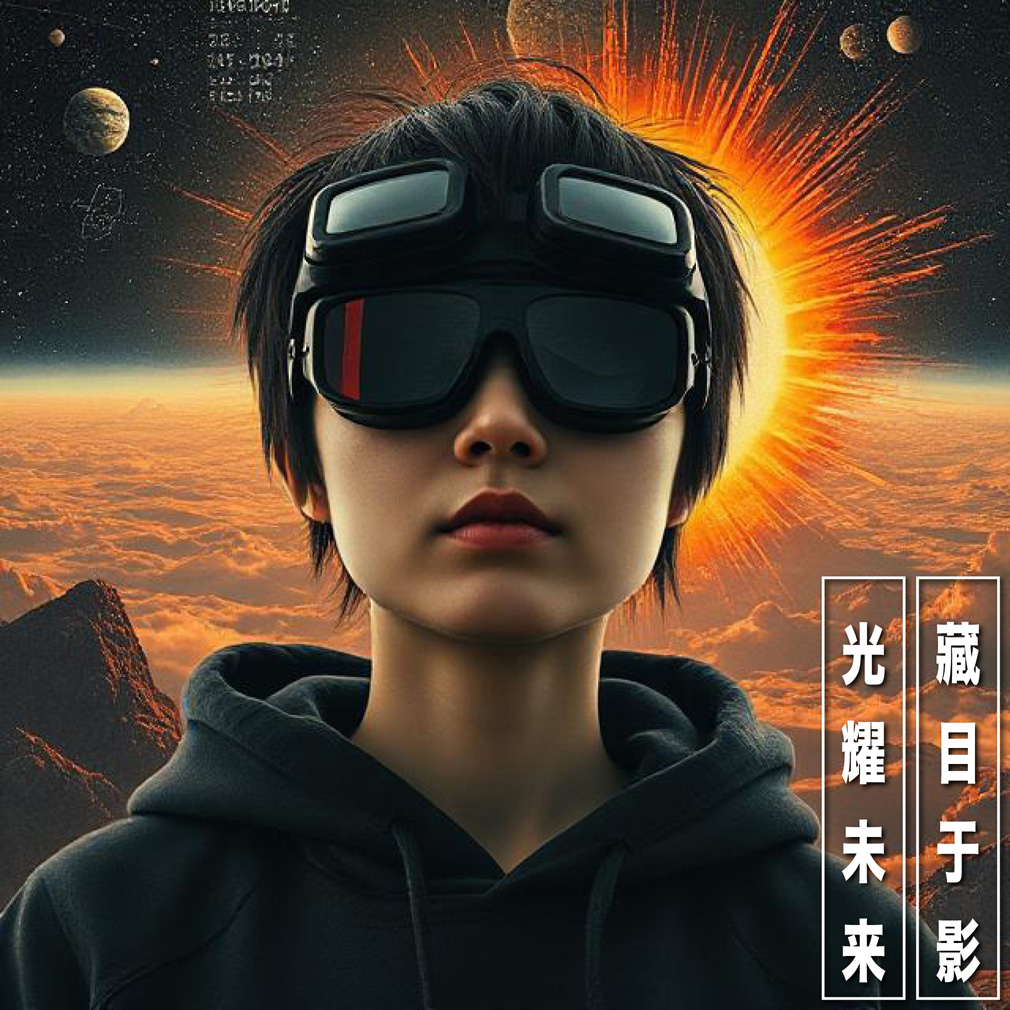
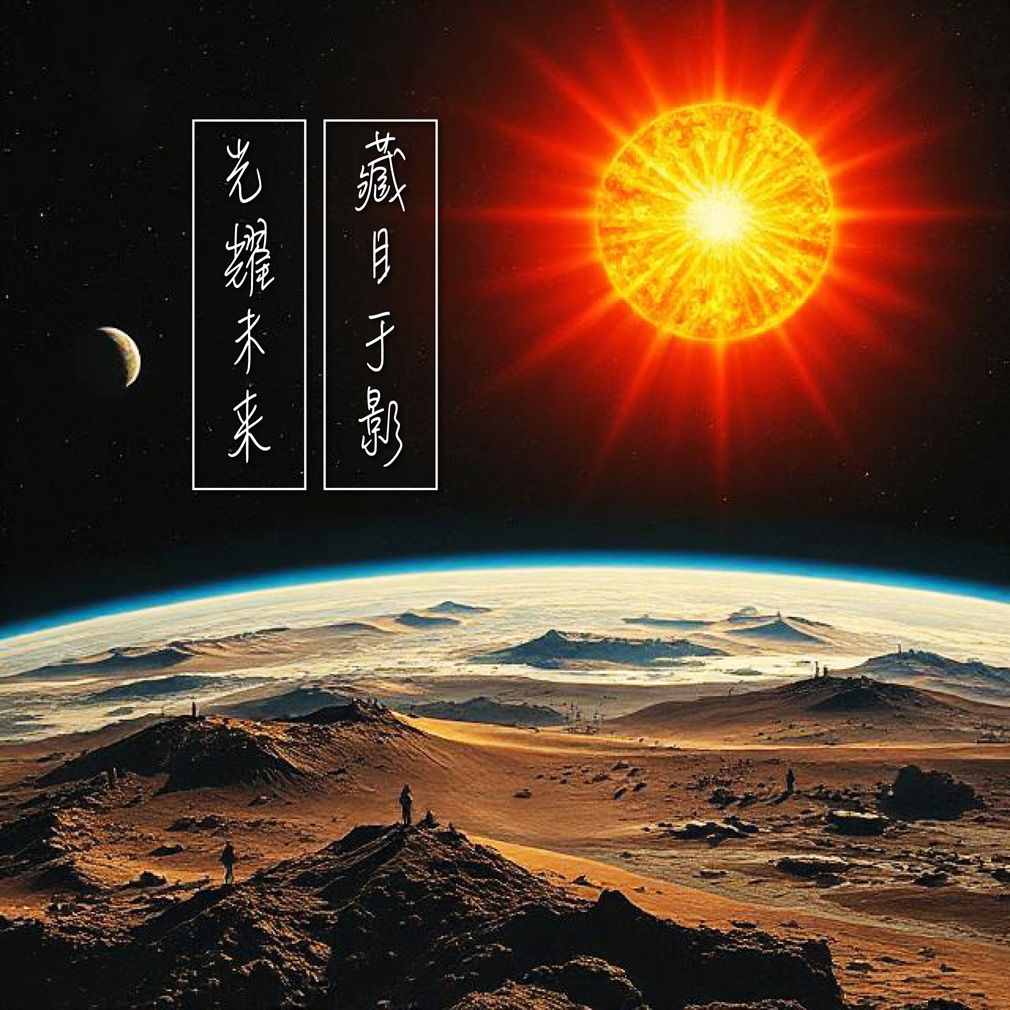
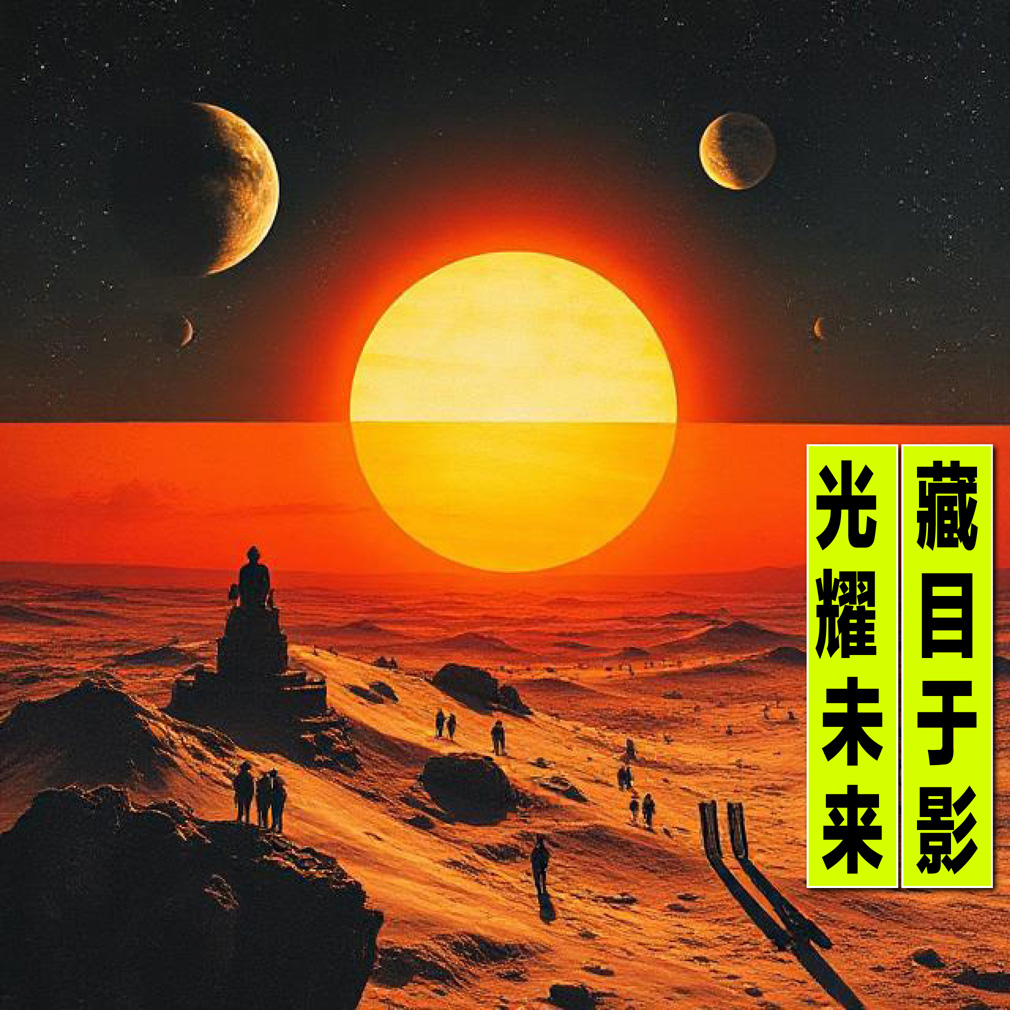

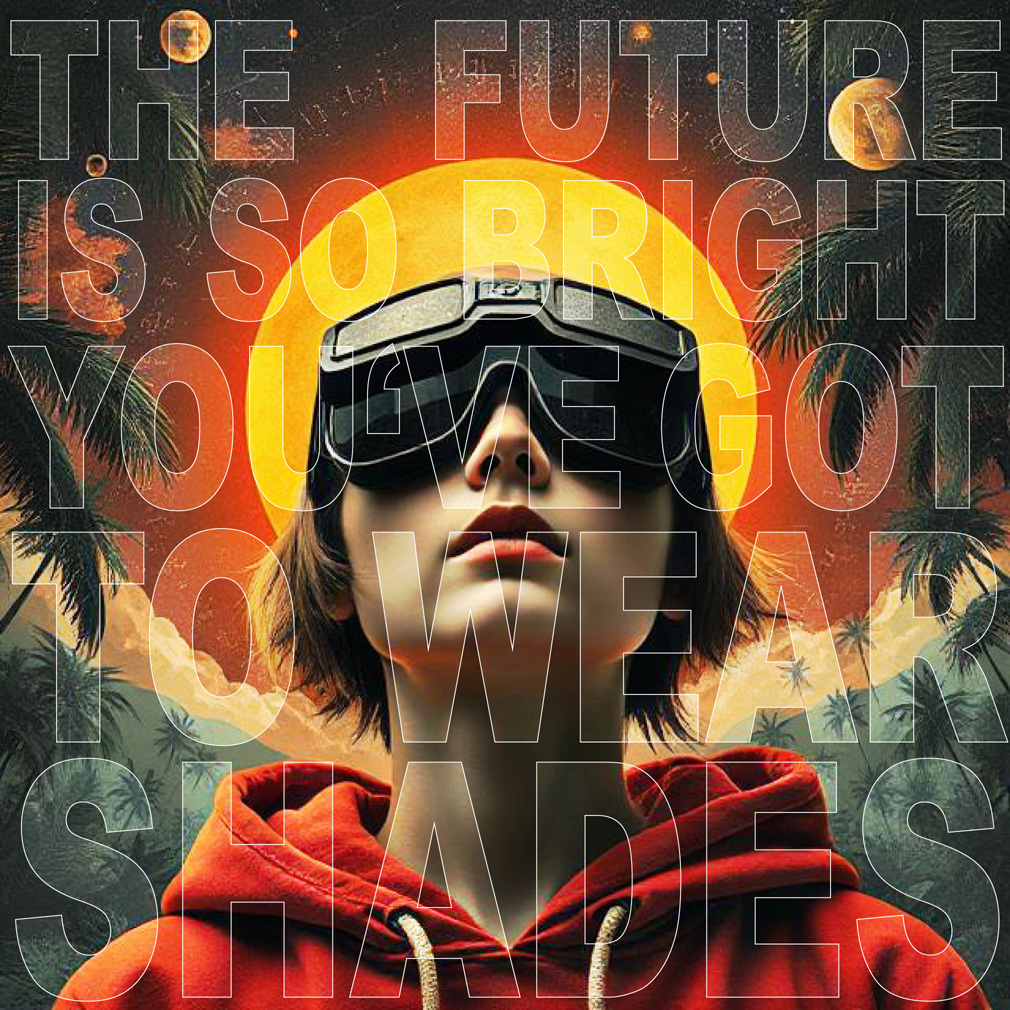
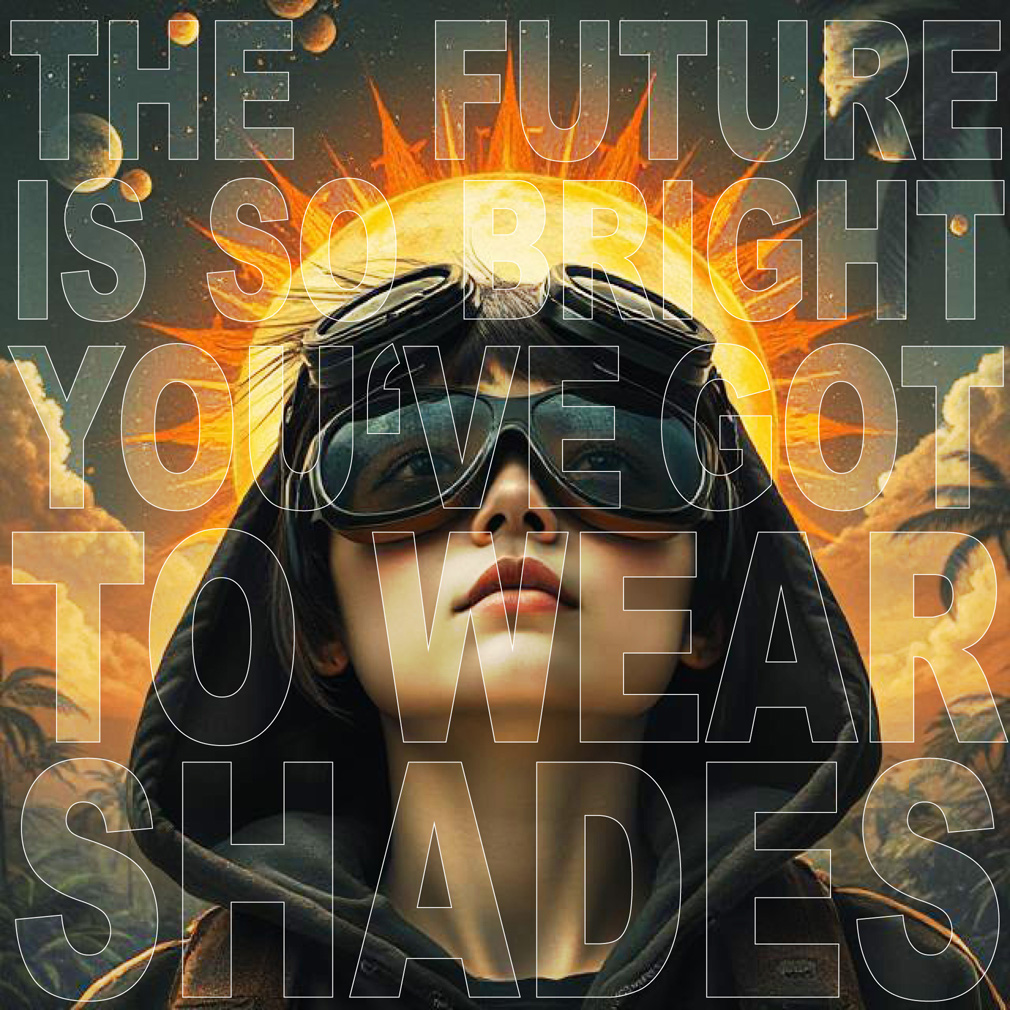
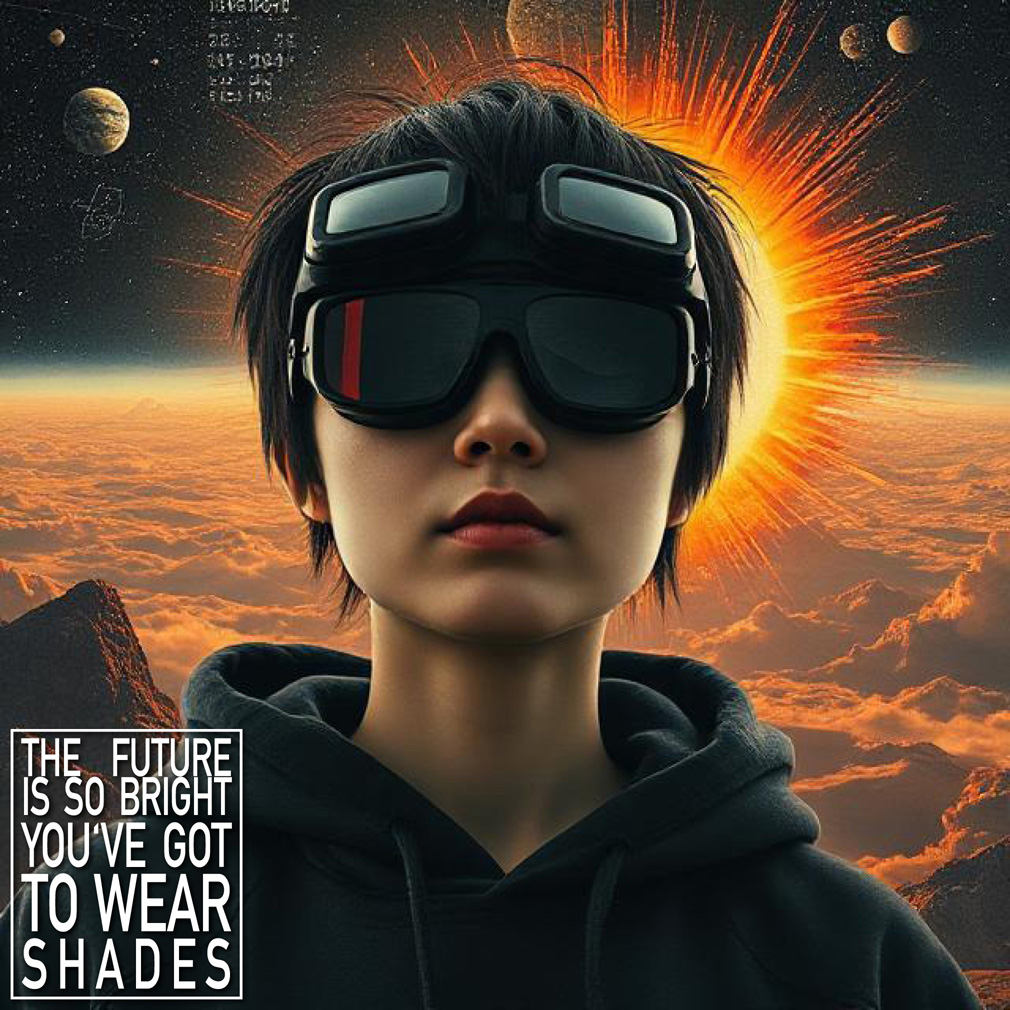
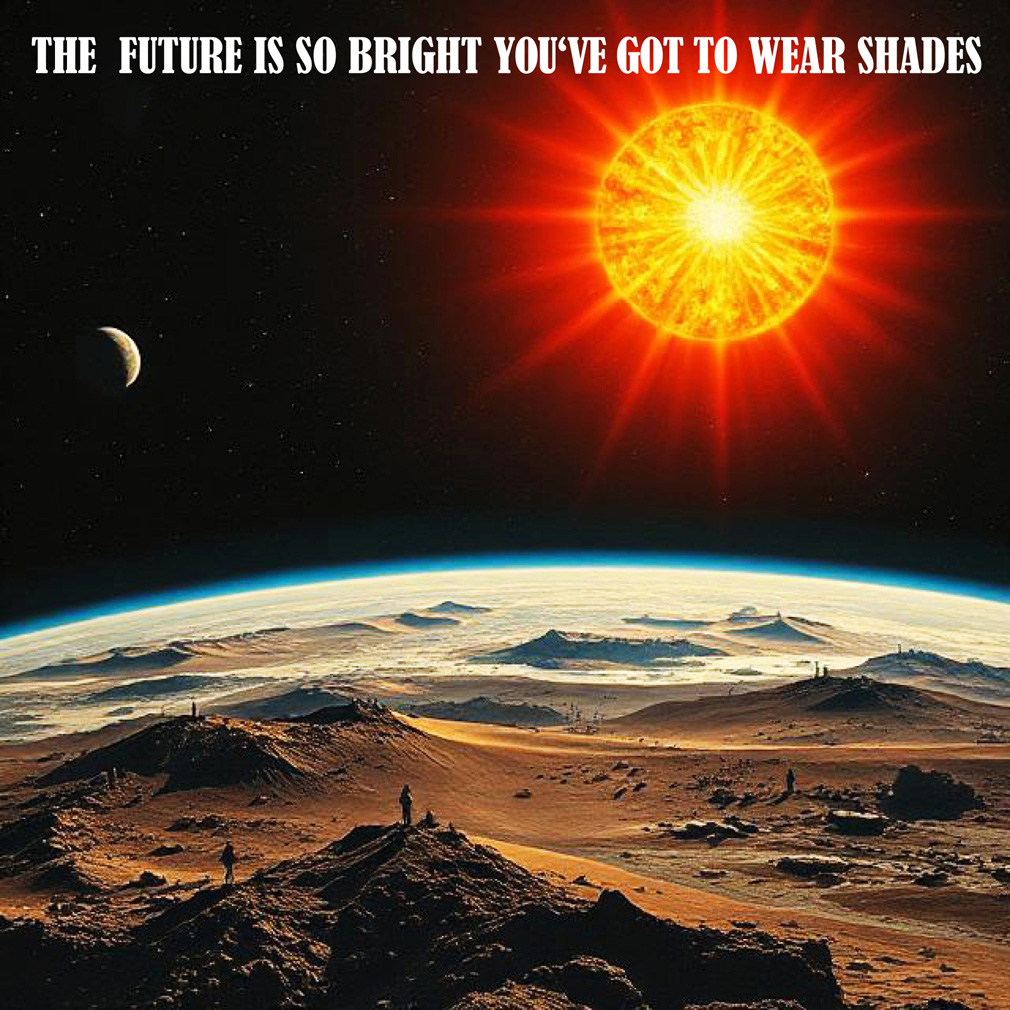
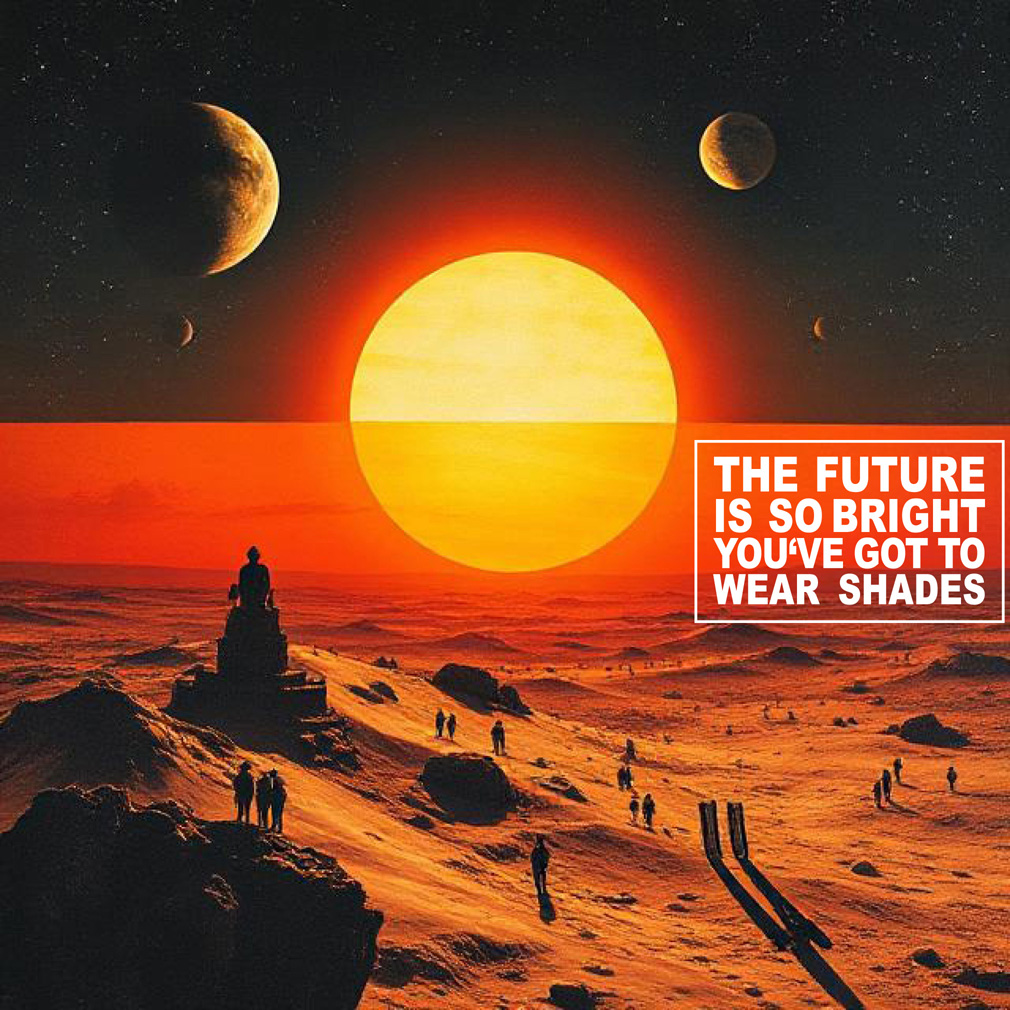
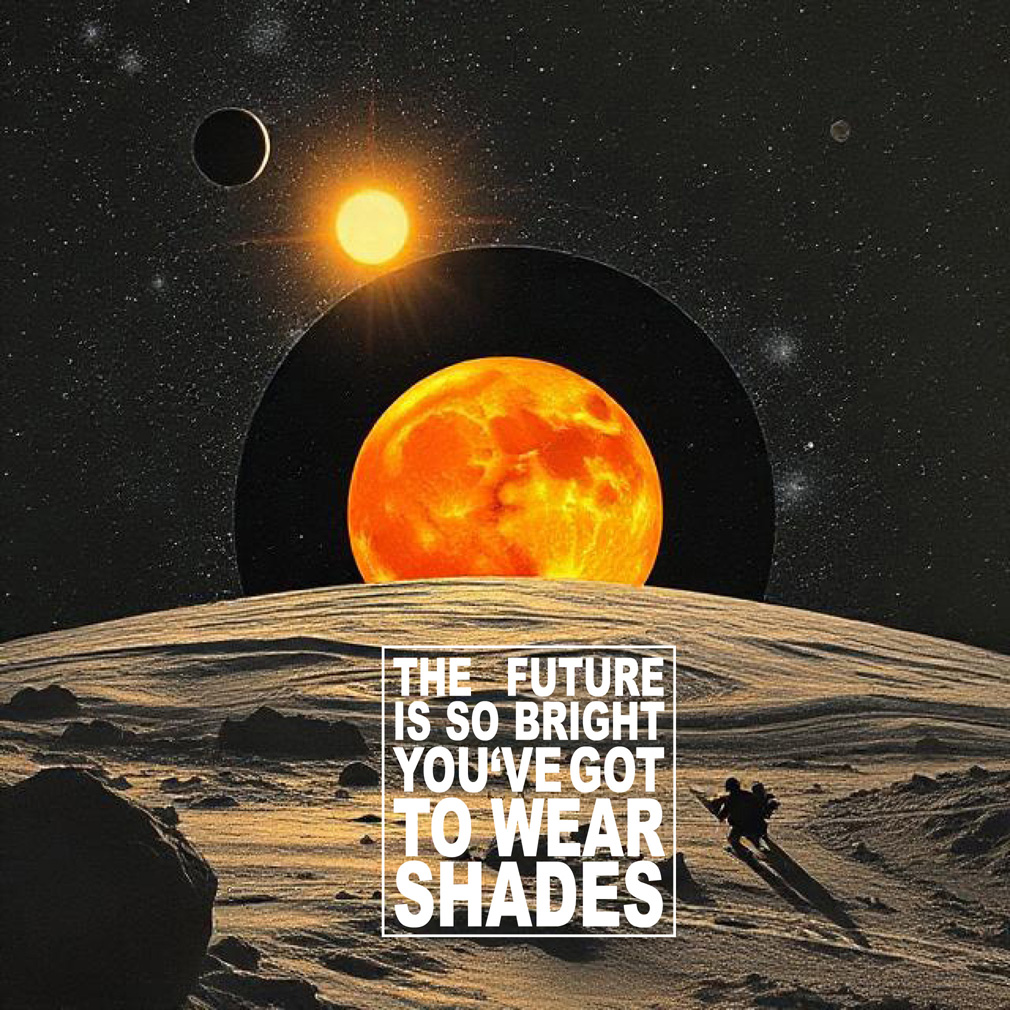
research
The Future1.1
201a.1
The Solar System is located in the Milky Way galaxy, a barred spiral galaxy with a diameter of about 100,000 light-years containing about 200 billion stars.
201a.3
The Sun lies between 25,000 and 28,000 light years from the Galactic Centre, and its speed within the galaxy is about 220 kilometres per second, so that it completes one revolution every 225–250 million years.
202a.4
In irgendeinem abgelegenen Winkel des in zahllosen Sonnensystemen flimmernd ausgegossenen Weltalls gab es einmal ein Gestirn, auf dem kluge Tiere das Erkennen erfanden. Es war die hochmütigste und verlogenste Minute der »Weltgeschichte«: aber doch nur eine Minute. Nach wenigen Atemzügen der Natur erstarrte das Gestirn, und die klugen Tiere mussten sterben." - Friedrich Nietzsche, Über Wahrheit und Lüge im außermoralischen Sinne, 1 (KSA 1: 875)
1_1
"The Future's So Bright, I Gotta Wear Shades" is a song by Timbuk3.
The inspiration for the song, and the title specifically, came when Barbara MacDonald said to her husband singer/songwriter Pat MacDonald,
"The future is looking so bright, we'll have to wear sunglasses!"
But, while Barbara had made the comment in earnest – it was the early '80s, the two had met and married and were starting a family, their first EP was coming, their book was filling up with gigs –
Pat heard the comment as an ironic quip and wrote down instead,
"The future’s so bright, I gotta wear shades."
Pat wrote a song of a young nuclear scientist and his future.
The inspiration for the song, and the title specifically, came when Barbara MacDonald said to her husband singer/songwriter Pat MacDonald,
"The future is looking so bright, we'll have to wear sunglasses!"
But, while Barbara had made the comment in earnest – it was the early '80s, the two had met and married and were starting a family, their first EP was coming, their book was filling up with gigs –
Pat heard the comment as an ironic quip and wrote down instead,
"The future’s so bright, I gotta wear shades."
Pat wrote a song of a young nuclear scientist and his future.
exhibition
The Future1.1 – 1.2
November 13th, 2025
